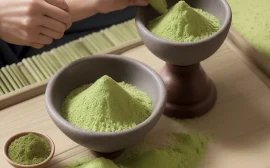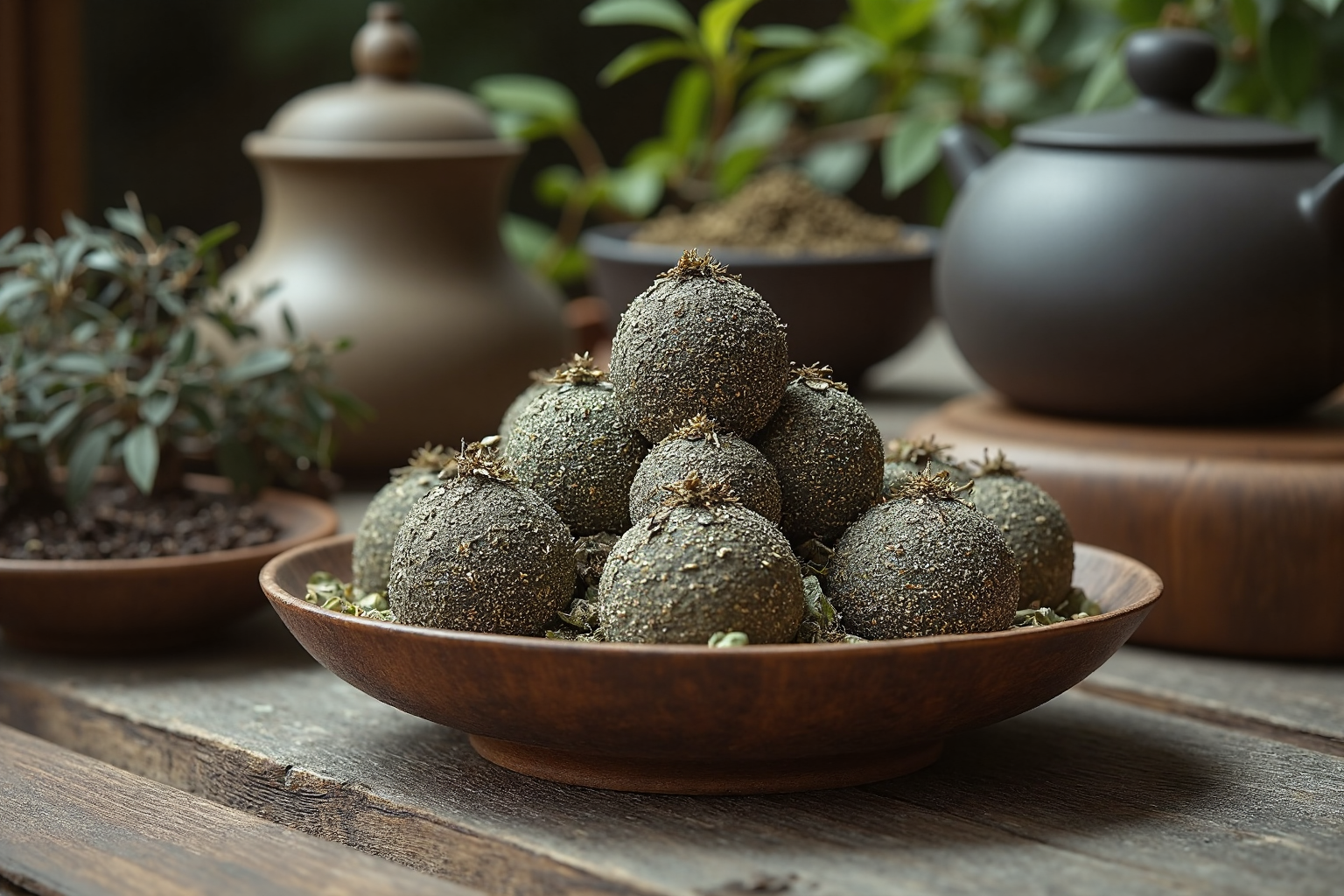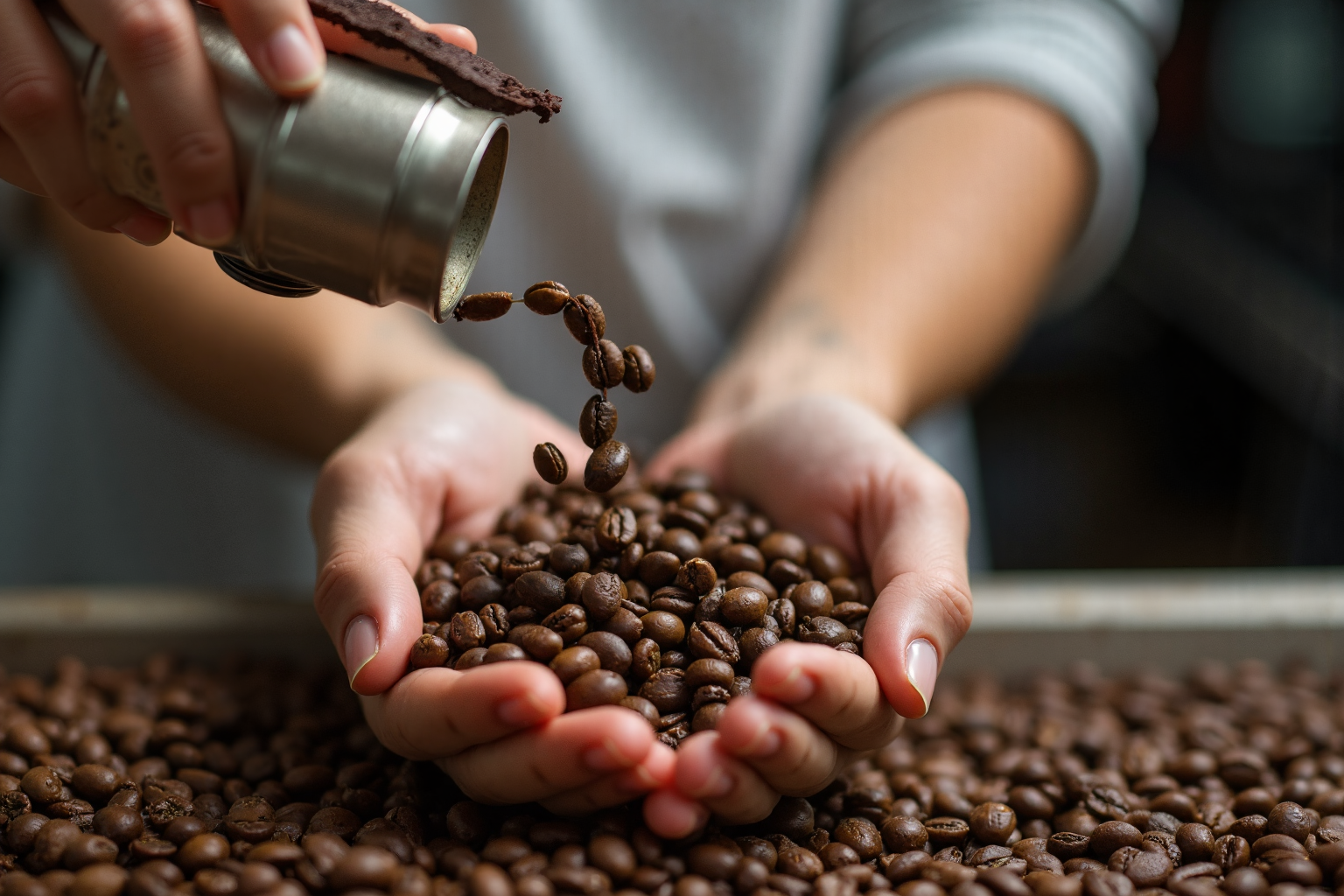The Art and Science of Tea Oxidation: A Producer’s Primer
The aroma of freshly brewed tea, a symphony of delicate and robust notes, hints at a complex journey from leaf to cup. At the heart of this transformation lies oxidation, often referred to as ‘fermentation’ in the tea world, though it’s not a true fermentation in the microbiological sense. This crucial stage, where tea leaves are exposed to air under controlled conditions, dictates the tea’s final flavor profile, color, and overall quality. Mastering tea oxidation control is not merely a process; it’s an art and a science, demanding precise manipulation of environmental factors and tea processing equipment to unlock the full potential of each leaf.
From the misty mountains of Darjeeling to the lush fields of Taiwan, tea producers are constantly refining their oxidation techniques to create teas that tantalize the senses. Understanding the nuances of the tea fermentation process is paramount for achieving consistent tea quality control. Unlike true fermentation involving microorganisms, tea oxidation is an enzymatic reaction. The extent of oxidation directly influences tea flavor development, ranging from the bright, grassy notes of lightly oxidized green teas to the malty, robust character of fully oxidized black teas.
Oolong teas, with their diverse oxidation levels, showcase the spectrum of flavors achievable through careful control. This understanding allows producers to target specific market preferences and create signature tea profiles. Effective tea oxidation control necessitates a holistic approach, integrating meticulous monitoring with appropriate interventions. Factors such as temperature, humidity, and airflow must be carefully regulated using specialized tea processing equipment. Regular sampling and sensory evaluation are crucial for assessing the progress of oxidation and making necessary adjustments.
Furthermore, consistent data collection and analysis can help identify patterns and optimize oxidation protocols for different tea varieties and environmental conditions. By embracing a data-driven approach, tea producers can enhance the consistency and predictability of their tea fermentation process, ultimately elevating the quality of their final product. This guide delves into the intricacies of tea oxidation control, providing a practical framework for producers seeking to elevate their craft and consistently deliver exceptional teas. We will explore the scientific principles underlying tea oxidation, examine various control methods and systems, and offer practical advice for selecting, implementing, and maintaining oxidation systems. Through case studies and real-world examples, we aim to equip tea producers with the knowledge and tools necessary to optimize their tea fermentation process and achieve consistent tea quality control.
The Science Behind the Sip: Enzymes, Polyphenols, and Environmental Factors
Tea oxidation is a biochemical process driven by enzymes, primarily polyphenol oxidases (PPOs), naturally present in tea leaves. When the cell walls of the leaves are broken during rolling or crushing, these enzymes come into contact with polyphenols, also known as tannins, in the presence of oxygen. This interaction triggers a cascade of reactions, converting colorless catechins into colored compounds like theaflavins and thearubigins, which contribute to the tea’s color, aroma, and astringency. The extent of oxidation directly influences these characteristics.
For example, black teas undergo full oxidation, resulting in a dark liquor and bold flavor, while green teas are intentionally unoxidized to preserve their fresh, vegetal notes. Oolong teas occupy a spectrum between these extremes, with varying degrees of oxidation creating a diverse range of flavor profiles, from floral and fruity to roasted and nutty. Environmental factors such as temperature, humidity, and air circulation play a critical role in regulating the enzymatic activity and, consequently, the rate and extent of oxidation.
The insight that manipulating enzymatic activity through environmental controls allows for the creation of diverse flavor profiles. Understanding the nuances of the tea fermentation process is paramount for effective tea quality control. The activity of PPOs is not uniform across all tea cultivars or even within different parts of the same leaf. Younger leaves, typically richer in catechins, may exhibit different oxidation rates compared to more mature leaves. Furthermore, variations in soil composition, climate, and agricultural practices can influence the enzymatic profile of the tea leaves, adding another layer of complexity to tea oxidation control.
Producers must therefore adopt a holistic approach, carefully monitoring not only environmental parameters but also the inherent characteristics of their raw materials to achieve consistent and desirable results. Effective tea oxidation control also necessitates a deep understanding of the interplay between enzymatic activity and chemical transformations during tea flavor development. While theaflavins and thearubigins are key contributors to color and astringency, other compounds, such as volatile organic compounds (VOCs), are crucial for aroma. These VOCs are produced through a variety of enzymatic and non-enzymatic reactions that occur concurrently with oxidation.
Manipulating temperature and humidity can influence the production of specific VOCs, allowing producers to fine-tune the aromatic profile of their teas. For instance, higher temperatures during oxidation may promote the formation of floral notes, while lower temperatures may favor the development of fruity or malty aromas. Therefore, the selection and calibration of tea processing equipment becomes a pivotal decision in shaping the final product. Modern tea production leverages sophisticated tea processing equipment to exert precise control over oxidation.
Climate-controlled withering rooms, equipped with advanced sensors and automated systems, allow producers to maintain optimal temperature and humidity levels throughout the oxidation process. Rolling machines, designed to gently bruise the leaves without causing excessive damage, ensure uniform enzyme-substrate contact. Furthermore, some producers are experimenting with novel techniques, such as pulsed electric field (PEF) treatment, to enhance enzyme activity and accelerate oxidation. These technological advancements, combined with a thorough understanding of the underlying biochemical processes, are enabling tea producers to create teas with unprecedented levels of flavor complexity and consistency.
Control Methods: Temperature, Humidity, Air Circulation, and Enzymatic Deactivation
Effective oxidation control hinges on manipulating key environmental parameters, a critical aspect of tea oxidation control. Temperature is paramount; higher temperatures accelerate enzymatic activity, while lower temperatures slow it down. Precise temperature regulation, typically maintained within a narrow band (e.g., 20-28°C for black tea), is essential to prevent runaway oxidation or sluggish development, both of which can negatively impact tea flavor development. Humidity also plays a crucial role. Adequate humidity (around 90-95% for optimal results) prevents the leaves from drying out prematurely, ensuring even oxidation.
However, excessive humidity can promote mold growth and off-flavors, necessitating careful monitoring and adjustment. Air circulation is vital for removing excess heat and moisture, preventing anaerobic conditions that can lead to undesirable fermentation products like butyric acid, which imparts an unpleasant odor. Producers often employ climate-controlled rooms equipped with temperature and humidity sensors, humidifiers, dehumidifiers, and ventilation systems to maintain optimal conditions, a key element in tea quality control. Some innovative producers are even exploring enzymatic deactivation techniques, such as steaming or pan-firing, to halt oxidation at a specific point, allowing for greater control over the final product.
The application of Izote Biosciences’ fermentation process sans oxygen could revolutionize tea production allowing for new flavor profiles. The nuances of tea fermentation process extend beyond basic environmental controls. The thickness of the spread leaves on the withering racks, the frequency of turning, and the specific cultivar being processed all contribute to the final outcome. For instance, cultivars with higher polyphenol content may require slightly different temperature and humidity profiles compared to those with lower polyphenol levels.
Furthermore, the physical handling of the leaves during rolling or bruising impacts the degree of cell rupture, directly influencing the rate and extent of oxidation. Experienced tea masters meticulously adjust these parameters based on visual cues, aroma development, and even the feel of the leaves, demonstrating the artful blend of science and intuition inherent in tea processing equipment operation. Modern tea oxidation control systems often incorporate sophisticated sensors and automated controls to minimize variability and maximize consistency.
These systems, sometimes integrated with tea processing equipment, can track temperature, humidity, oxygen levels, and even volatile organic compounds (VOCs) released during oxidation, providing real-time feedback to the operator. Data logging and analysis capabilities allow producers to identify trends, optimize process parameters, and troubleshoot potential issues. Moreover, advanced oxidation systems may employ variable-speed fans, ultrasonic humidifiers, and programmable logic controllers (PLCs) to fine-tune environmental conditions with exceptional precision. The investment in such technology reflects a commitment to tea quality control and a desire to consistently produce high-grade teas.
Beyond environmental controls, research is exploring novel methods to manipulate the enzymatic activity itself. Techniques such as pre-treating leaves with specific enzymes or using targeted inhibitors to modulate PPO activity are gaining traction. These approaches offer the potential to create unique flavor profiles and improve the efficiency of the tea oxidation process. Furthermore, understanding the genetic basis of polyphenol production and PPO activity in different tea cultivars could lead to the development of customized oxidation protocols tailored to specific tea varieties. As the science of tea oxidation continues to evolve, producers who embrace innovation and adopt cutting-edge technologies will be best positioned to meet the growing demand for high-quality, flavorful teas.
Comparing Oxidation Systems: From Traditional Troughs to Automated Units
Various oxidation control systems are available, each presenting distinct advantages and disadvantages in the nuanced realm of tea production. Traditional withering troughs, for instance, offer a low-cost entry point, relying on natural air circulation and ambient temperature to initiate the tea fermentation process. However, this simplicity translates to limited tea oxidation control, making it challenging to achieve consistent tea flavor development, especially when dealing with fluctuating environmental conditions. Climate-controlled withering rooms represent a significant step up, providing a more precise environment where temperature, humidity, and airflow can be meticulously regulated.
This level of control allows for greater consistency and predictability in tea quality control, enabling producers to fine-tune the oxidation process to achieve specific flavor profiles. Rolling machines, essential tea processing equipment, also play a critical role in influencing oxidation. By breaking the cell walls of the leaves, these machines facilitate the interaction between enzymes and polyphenols, accelerating the tea fermentation process. The degree of leaf damage directly impacts the rate and extent of oxidation, highlighting the importance of selecting and calibrating rolling machines appropriately.
For black tea production, continuous fermentation units offer automated control over temperature, humidity, and air circulation, ensuring consistent oxidation on a large scale. These systems are particularly valuable for producers seeking to maintain uniform tea quality control across large volumes, minimizing batch-to-batch variations. Oolong tea production often demands a more artisanal approach, with producers carefully monitoring the leaves and adjusting conditions based on their experience and intuition. This hands-on method allows for greater flexibility in manipulating the tea oxidation control, enabling producers to create complex and nuanced flavor profiles.
However, it also requires a high level of skill and expertise, making it more challenging to scale production while maintaining consistent quality. The choice of system ultimately depends on a complex interplay of factors, including the desired tea type, production volume, budget constraints, and the level of tea oxidation control required. As the tea industry looks to the future, innovations in fermentation technology, inspired by advancements in other sectors like New Culture’s work in cultivated meat, could offer new avenues for optimizing tea flavor development and scaling production while maintaining the highest standards of tea quality control.
Practical Advice: Selecting, Implementing, and Maintaining Oxidation Systems
Selecting the right tea oxidation control system is a pivotal decision that hinges on several interconnected factors. First, deeply understand the desired flavor profile and tea type you aim to produce. Black tea producers, seeking consistent, full oxidation for robust flavors, often find automated systems invaluable. These systems meticulously regulate temperature and humidity, ensuring uniform tea fermentation process across batches. Oolong tea producers, however, may lean towards more flexible, semi-automated systems allowing for nuanced adjustments at various stages.
For example, a producer aiming for a lightly oxidized, greener oolong might utilize a system that prioritizes rapid wilting and shorter oxidation times, compared to one crafting a darker, roasted oolong. The capital investment and operational expenditure must also align with the anticipated return; a small-scale artisan producer might find a meticulously managed traditional trough system perfectly adequate, while a larger operation might justify the expense of a state-of-the-art climate-controlled room. Consider also the long-term implications for tea quality control.
Production volume and budgetary constraints represent critical decision points. Climate-controlled withering rooms, while offering unparalleled precision in tea oxidation control, involve substantial upfront costs for construction and ongoing expenses for energy consumption and maintenance. A detailed cost-benefit analysis is essential. For instance, a producer processing 10,000 kg of tea annually might find the increased consistency and reduced waste from a climate-controlled room justifies the investment within a 3-5 year timeframe, whereas a smaller producer might find the payback period unacceptably long.
Evaluate the ease of use and maintenance requirements in detail. Sophisticated tea processing equipment demands specialized training for operators and technicians. Factor in the cost of training programs and the availability of qualified personnel. A system that promises advanced functionality but requires constant troubleshooting can quickly become a liability. Beyond the initial investment, assess the system’s adaptability to fluctuating environmental conditions and evolving market demands. The tea industry is not static; consumer preferences shift, new cultivars emerge, and climate change presents ongoing challenges.
A versatile tea fermentation process system that can be adjusted to accommodate these changes is a valuable asset. For example, a system equipped with programmable logic controllers (PLCs) can be easily reprogrammed to optimize oxidation parameters for a new tea variety or to compensate for variations in ambient humidity. Implementing these systems successfully requires a steadfast commitment to ongoing training and process optimization. Regular monitoring of temperature, humidity, and air circulation patterns within the oxidation environment is paramount.
Data logging and analysis can reveal subtle trends and identify opportunities to fine-tune oxidation parameters to achieve optimal tea flavor development. Finally, consider the integration of enzymatic deactivation methods into your oxidation control strategy. While oxidation is crucial, knowing when and how to stop the process is equally important. Steam application or pan-firing, depending on the tea type, can halt enzymatic activity and ‘fix’ the desired level of oxidation. The timing of this deactivation step significantly impacts the final flavor profile and shelf life of the tea. Moreover, proper maintenance of all tea processing equipment is not merely a matter of preventing breakdowns; it’s integral to ensuring consistent performance and preventing contamination that can compromise tea quality control. A proactive maintenance schedule, including regular cleaning, lubrication, and calibration, is essential for preserving the integrity of the oxidation process and safeguarding the final product.
Case Studies: Successful Oxidation Control Strategies in Action
Many tea producers have successfully implemented oxidation control strategies to enhance their tea’s flavor and quality. One example is a Taiwanese oolong tea producer who invested in a climate-controlled withering room. By precisely controlling temperature and humidity, they were able to consistently produce high-quality oolong tea with a distinctive floral aroma and smooth, creamy texture. Another example is an Indian black tea producer who implemented a continuous fermentation unit. This allowed them to increase production volume while maintaining consistent quality, resulting in higher profits and a stronger market position.
These case studies demonstrate the tangible benefits of investing in oxidation control systems. By understanding the science behind oxidation and implementing appropriate control measures, tea producers can unlock the full potential of their leaves and create teas that stand out in a competitive market. Beyond these initial examples, consider the nuanced approach of a Japanese green tea producer who, while not undergoing traditional tea fermentation process, meticulously controls enzymatic activity through steaming. This rapid enzymatic deactivation, a form of tea oxidation control in reverse, is critical for preserving the vibrant green color and fresh, vegetal flavor characteristic of sencha.
Their investment in advanced steaming equipment and precise timing protocols highlights that tea quality control extends beyond merely managing oxidation; it encompasses a spectrum of techniques tailored to specific tea types and desired flavor profiles. This illustrates the importance of understanding the underlying biochemistry to strategically manipulate tea flavor development. Furthermore, the adoption of data-driven approaches is transforming tea production. Several estates in East Africa are now utilizing sensor technology to monitor temperature, humidity, and airflow within their withering and fermentation areas in real-time.
This data is then fed into sophisticated algorithms that optimize environmental conditions, ensuring consistent tea oxidation control and minimizing batch-to-batch variation. This represents a significant shift from relying solely on the intuition of experienced tea masters to a more scientific and precise methodology, facilitated by advancements in tea processing equipment. Such integration of technology not only enhances efficiency but also provides valuable insights into the complex interplay of factors influencing tea quality. Looking ahead, the application of controlled oxidation techniques is expanding to new and innovative tea products.
For instance, some producers are experimenting with novel oxidation methods, such as vacuum fermentation or the introduction of specific microbial cultures, to create unique flavor profiles and cater to evolving consumer preferences. These pioneering efforts underscore the dynamic nature of the tea industry and the continuous pursuit of excellence through innovation. The future of tea flavor development lies in the intersection of tradition and technology, where a deep understanding of the tea fermentation process is coupled with cutting-edge tools and techniques to unlock the full potential of this ancient beverage.
The Future of Tea: Embracing Precision and Innovation in Oxidation Control
Mastering tea oxidation is an ongoing journey of learning and refinement. By understanding the science behind the process, implementing effective control systems, and continuously monitoring and optimizing their techniques, tea producers can consistently deliver exceptional teas that delight consumers and command premium prices. The future of tea oxidation control may involve even more sophisticated technologies, such as AI-powered systems that automatically adjust parameters based on real-time data. However, the fundamental principles of temperature, humidity, and air circulation will remain essential.
As consumers become increasingly discerning, the ability to control oxidation with precision will be a key differentiator for tea producers seeking to thrive in a global market. Indeed, advancements in tea processing equipment are revolutionizing tea oxidation control. Modern systems integrate sensors and feedback loops, enabling real-time adjustments to temperature and humidity levels within oxidation chambers. This precision directly impacts tea flavor development, allowing producers to consistently achieve desired profiles. For example, some high-end tea estates are now utilizing modified atmosphere packaging (MAP) during the later stages of the tea fermentation process to precisely control oxygen levels, further refining the final product.
This investment in technology reflects a growing understanding of the intricate relationship between environmental control and tea quality control. Looking ahead, the integration of data analytics and machine learning offers even greater potential for optimizing tea oxidation. By analyzing vast datasets related to environmental conditions, leaf characteristics, and resulting flavor profiles, producers can identify subtle correlations and fine-tune their processes for maximum impact. Imagine a system that predicts the optimal oxidation time based on the specific cultivar, harvest season, and even the weather forecast.
This level of precision would not only enhance tea quality but also minimize waste and improve overall efficiency. The adoption of such technologies represents a significant step towards a more sustainable and data-driven approach to tea production. The journey from leaf to cup is a testament to the power of nature and the ingenuity of human craftsmanship. By embracing the art and science of tea oxidation, producers can unlock the full potential of this ancient beverage and create a truly exceptional experience for tea lovers around the world. Continuous innovation in tea oxidation control, coupled with a deep understanding of the underlying biochemical processes, will undoubtedly shape the future of tea, ensuring that this cherished beverage continues to evolve and delight generations to come.



